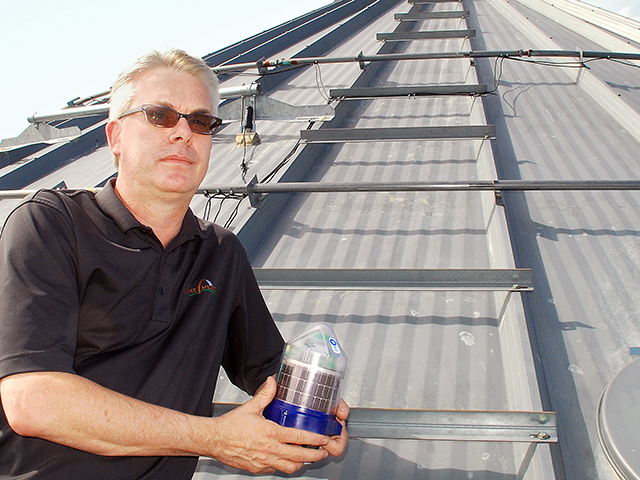This yearlong endeavor looks at how four farmers are evaluating technology and agronomic information that can boost the productivity of their operations.

Building crop–production data is a construction project with an endgame every bit as tangible as a new grain bin or machine shed.
"It's like stacking Legos," says Nevada, Mo., farmer Steve Cubbage. "Layer after layer, you're building a database. And if you build it well, you're going to have a structure that can positively impact your operation."
Frequently, though, too many of those building blocks are haphazardly piled on a precarious foundation.
"The biggest issue is that there's not a consistent, organized way in which most growers collect data," Cubbage says. He has the unique perspective of providing precision ag assistance through his Prime Meridian company, as well as growing corn, soybeans and wheat in southwest Missouri.
"Great example—a farmer hits a drought year and regards it as an anomaly as well as not wanting to show bad numbers. He falls off the data wagon," Cubbage explains. "You can't build a long–term database that way. You must have discipline, and you have to start stacking those data blocks."
Adding to the quality data challenge is the fact that many hardware and software providers are focused on only a piece of the puzzle.
"There are so many sources," Cubbage observes. "Whether it's on the iron side, the fertilizer side, the seed side or whatever. It's not that the products don't work. It's more a problem of viewing the data in isolation. The hardware and software are just tools—the data is the prize, but it has to give you the big picture if you're using it as a basis for decisions."
He recalls a farmer who was relying on yield data alone as the basis for a variable–rate seeding prescription.
"The customer was planting a high–end hybrid that was falling on its face," Cubbage explains. "We went in and did extensive soil sampling, topographical mapping and took other measurements—turns out the pH levels were abysmal. It wasn't the hybrid, it was incomplete data."
Cubbage calls them "disconnected dots," scattered bits of information that tell only pieces of the story. He and the folks he works with began building a foundation for the farm several years ago. The "meat and potato" data layers were yield, variety, population, soil type and fertility. Since then, more data layers have been stacked on or are being added—NDVI (Normalized Difference Vegetation Index), soil electrical conductivity, topographical and in–season thermal imagery and weather.
"I'd say we have good, solid data for about 13 years now," Cubbage says. "Not every field is perfect, but we have data we're comfortable acting on, and more layers will allow us to refine our practices further. For our customers, we won't write a variable–rate seeding prescription if he or she doesn't have a minimum of three years of data, and we'd prefer more. Anything less is a knee-jerk reaction, and that’s dangerous."